Measurement of PAR
(Photosynthetically Active Radiation)
Content
1. Short description
This technical article presents the theoretical fundamentals and metrological implementation of photosynthetically active radiation (PAR) measurements. It describes the basics of light measurement with respect to the absorption of light by plants and its effect on plant growth, etc. The spectral light meter products that are described in this paper have been developed by Gigahertz-Optik GmbH with functions specifically developed for this application. They offer particular advantages when assessing LED grow lights, for example, compared to traditional PAR sensors.
2. What is PAR?
2.1 Basics
The human eye but does not have an equal sensitivity to all wavelengths in the visible spectrum of light. First published by the CIE [1], the V(λ) curve describes the average spectral sensitivity of human visual perception of brightness under normal (photopic) lighting conditions such as daylight. This spectral responsivity weighting function, commonly referred to as the photometric or V(λ)curve, is used to derive photometric parameters such as the illuminance in lux or luminous flux in lumens from absolute radiometric measurements. For low level lighting conditions an additional sensitivity curve is defined for the human eye, the so called scotopic spectral sensitivity.
Figure 1: Spectral function of the eye for photopic and scotopic vision
For example, to determine the intensity of visible light on a surface, the measured physical (radiometric) quantity spectral irradiance Ee is weighted by the V(λ) curve and integrated over the defined spectral range. The value obtained is then multiplied with the proportionality factor Km in order to calculate the photometric quantity illuminance Ev. The factor Km is from the physical definition of the SI base unit for light intensity, 683 lm/W. The determination of illuminance is therefore described by the following equation:
This concept can also be transferred to plants. However, it must be noted that although plants respond to a similar wavelength range, they exhibit very different spectral absorption characteristics compared to the human eye. Therefore, photometric measures such as lux and lumens are not meaningful for plants. This is where the PAR (photosynthetically active radiation) concept originates from. For this purpose, photosynthetically active radiation, PAR, is generally accepted to refer only to light within the 400nm to 700nm wavelength range. Significantly, it has constant photosensitivity over this entire range.
Figure 2: Relative spectral quantum efficiency i.e. photosensitivity for PAR
(between 400 - 700 nm)
Based on this function, the light energy irradiated in the spectral range between 400 – 700 nm can be specified per area (W/m²). Mathematically, the concept can be transferred from light technology:
McCree [4] showed that the number of photons (light quanta) is a better measure of photosynthetic efficiency than energy. The number of photons per area in this spectral range (400 – 700 nm), referred to as Photosynthetic Photon Flux Density (PPFD), is given in µmol/(m²s). Formerly, PAR PPFD was given in μE.m−2.s−1, where μE stands for micro-einsteins, but this is not a recognized SI unit.
Where conversion from W/m² to µmol/(m²s) is performed as shown below:
Here, h is Planck’s constant, c the speed of light, NA the Avogadro number, and λ the wavelength of the photon. Below is a sample conversion (for 550 nm):

The spectral function, which represents constant photon sensitivity, is therefore not constant in terms of energy since photons on different wavelengths have different energy levels. This results in a slope in the PAR spectral function:
Figure 3: Relative spectral function for PAR (from 400 - 700 nm) for photon number calculation
This spectral function is mostly used for comparison measurements, etc. However, from a scientific point of view, it is not entirely satisfactory since the spectral function, which is used for PAR calculations (see Figure 3) does not correspond to the effective function of any real plants. In addition, almost every plant has a different function, although many are very similar. This means that a good measurement device should be able to analyze all these functions. This is only possible with a spectral measurement system. Traditional quantum sensor based technologies yield no spectral information and are therefore unable to offer the many and complex functions required to research and exploit the almost limitless spectral possibilities offered by LED based horticultural lighting. Figure 4 shows several spectral functions [2-3], [6-8].
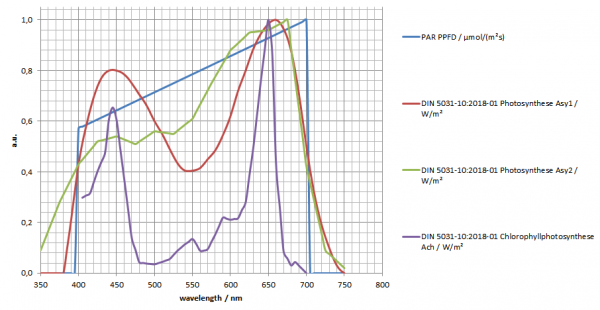
Figure 4: Some common relative spectral functions
2.2 PPFD, DLI and PPF metrics
Photosynthetic Photon Flux Density (PPFD), as detailed above, is the measurement of the total number of photons within the PAR wavelength range that reach a surface each second measured over a one square meter area. Along with DLI (see below), it is of most importance to growers. It is measured in μmol/m2/s and can be thought of as being analogous to measuring illuminance (lux) for visible light.
Day Light Integral (DLI) is the cumulative measurement of the total number of photons within the PAR wavelength range that reach a surface during 24 hour period, measured over a one square meter area. It is measured in mol/m2/d, where d stands for day [5].
Photosynthetic Photon Flux (PPF) is a measurement of the total number of photons emitted by a light source each second within the PAR wavelength range and is measured in μmol/s. Lighting manufacturers may specify their grow light products in terms of PPF. It can be considered as analogous to measuring the luminous flux (lumens) of visible light which would typically require the use of an integrating sphere or a goniometer system with spectroradiometer sensor.
2.3 R/FR ratio
Plant growth and morphology involves more than just photosynthesis. Plants have numerous photoreceptors that have specific spectral sensitivity functions ranging from the UV-B to far-red regions. Phytochrome, for example, is an important class of photoreceptor that is sensitive to the relative proportion of red light (R) to far-red light (FR), which allows a plant to assess the amount of photosynthetically active light and trigger shade avoidance responses accordingly.
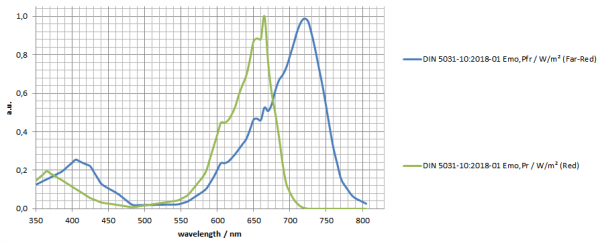
Figure 5: Principle functions for the R/FR ratio
The Red/FarRed ratio (R/FR ratio) is the ratio of two weighting functions, as shown in Figure 5, comprising DIN 5031-10:2018 photomorphogenesis Emo,Pr in W/m2 (red) and Emo,Pfr in W/m2 (far-red). The irradiance is determined in W/m² for each of the functions and the ratio of the two values is calculated.
3. Metrological implementation
3.1 Basics
Spectroradiometers provide the full spectral power distribution data for the light source measured whereas radiometers give a single integral measurement value based on the spectral sensitivity of its detector + filter combination as well as the calibration source employed. Therefore, a suitably filtered radiometer can be used to determine the irradiance for a specific spectral function such as PAR or V(λ) visible light (special case known as a photometer). Such integral measurement systems usually have a shorter measurement time compared to spectral measurement systems. However, an integral detector can only be matched to one spectral function, but this can never be realized perfectly which results in spectral mismatch errors. Significantly, neither an integral detector (radiometer) nor a quantum sensor can provide any spectral information from LED grow lights and hence severely limits their potential for developing and monitoring “lighting recipes" in modern horticulture.
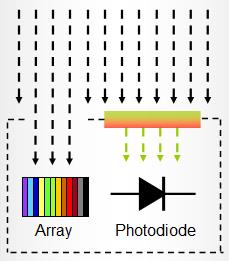
Figure 6: Simple principle of the BTS sensor
Therefore, Gigahertz-Optik has developed a range of technologies to overcome these limitations including pure spectroradiometer products such as the MSC15 and CSS-45 as well as the so-called bi-technology light sensor (BTS). The spectral range of these instruments extends beyond the PAR range (360-830 nm).The extended red / near-IR range is of particular benefit (e.g. for R/FR ratio). The versatile BTS light meters incorporate both a photodiode for the integral measurement and a spectroradiometer with a CCD or CMOS array for spectral measurement. The combination of these two sensor technologies makes it possible to measure photometric parameters using the integral photodiode, as well as the spectrum of the measurement device. The advantages of both sensor principles can thus be exploited. In addition, there is also the advantage that, in terms of spectral mismatch, the integral detector can be corrected directly using the data provided by the spectrometer (more information can be found in the information portal: BTS Technology).
3.2 BTS256-EF
The BTS256-EF (formerly BTS256-PAR) is both a spectral and an integral measurement light meter. This is made possible by Gigahertz-Optik’s BiTec sensor technology described above.
The measurement device is characterized by its compact design and is perfectly suited for mobile applications. It is splash-proof thus making it also ideal for use outdoors and in greenhouses. A data logging function is provided by the large internal memory which can be accessed via the S-BTS256 software. In terms of user friendliness, numerous display modes are supported and the view can also be customized as one wishes. The perfectly adapted cosine diffusor, combined with a calibration that is traceable to national standards, make this device a precision meter. It can also be supplied with an integrated Wi-Fi interface if desired.
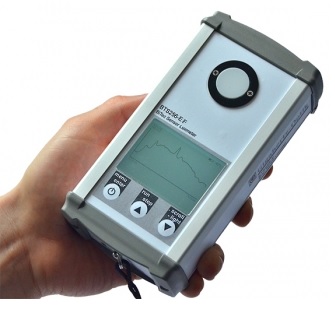
Figure 7: The BTS256-EF handheld measurement device
The device includes the direct measurement and display of the PAR metrics PPFD, DLI, R/FR and custom irradiance values that are defined by specifying the spectral start and end point. In addition, the user can also define a custom spectral function i.e. spectral weighting functions can be defined and transmitted to the device using the S-BTS256 software. These are then evaluated and displayed directly by the device when in mobile operation.
Besides these standard and custom PAR metrics, the BTS256-EF provides comprehensive measurement of photometric and colorimetric parameters such as the illuminance, color coordinates, color rendering index, color temperature, etc as well as flicker. This wide range of functionality makes the meter particularly attractive for both lighting manufacturers and horticultural research users.
3.3 MSC15
The MSC15 is a handheld spectral light meter incorporating a micro-spectrometer unit.
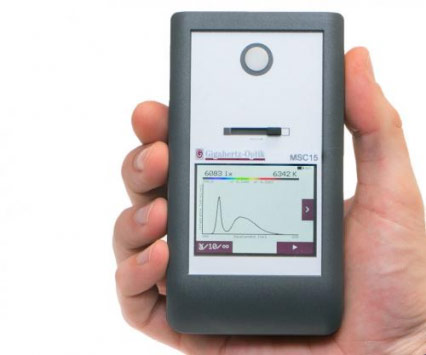
Figure 8: The MSC15 spectral light meter
The MSC15 impresses with its intuitive operation via a color-touchscreen display and by its very compact dimensions. Its diffuser provides very good cosine correction and combined with a calibration that is traceable to national standards, this meter is the perfect choice for horticulturalists wishing to make accurate, routine measurements. The device directly displays PAR PPFD values.
Additionally, the meter provides comprehensive measurement of photometric and colorimetric parameters such as the illuminance, color coordinates, color rendering index, color temperature, etc The meter is supplied with basic software (S-MSC15) to display, store and export the spectral data and computed values.
3.4 CSS-45
The CSS-45 is a remote operated, intelligent spectral detector with both RS-485 and USB interfaces.
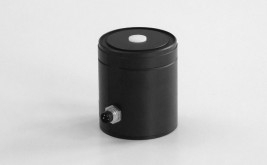
The CSS-45 provides the full measurement capability of the MSC15 handheld spectral light meter in a robust housing (with protective glass dome option) fully under software control. It can be used in single and multi-detector configurations and the internal shutter is remote controlled. It is therefore suitable for monitoring PAR levels in otherwise inaccessible locations, and is well suited for use in conjunction with positioning equipment e.g. for area mapping of light distribution. An SDK is provided for software system developers. It can be as well operated with the S-MSC15.
4. Conclusion
LED grow lights allows the control of the spectral composition of light in more freedom which can be used to govern a plant’s growth rate, shape and flowering. Therefore, modern PAR meters need to be much more than just a basic integral measurement system. Spectrometers are needed to determine the different spectral weighting functions required. These functions can no longer be realized with simple filter + photodetector combinations. PAR meters should also offer portable operation and need to be at least splash-proof since most of their use is either conducted outdoors or in greenhouses. The ability to directly measure typical PAR measurement values such as PAR PPFD, daily light integral (DLI), and the Red/FarRed (R/FR) ratio is most advantageous. Gigahertz-Optik’s measurement device BTS256-EF supports all these functions and additionally impresses with its user-friendliness and its powerful S-BTS256 user software that even allows the user to define and transmit custom weighting functions to the device. The economically priced and user friendly MSC15 is perfectly suited for routine PAR measurements and the CSS-45 offers the possibility for remote measurements in inaccessible locations, for example.
5. References
[1] ISO 23539:2005 (CIE S010/E:2004) Photometry -- The CIE system of physical photometry
[2] J. Krochmann and R. Rattunde, Quantities and Units of Photosynthetically Effective Radiation, Institut für Lichttechnik der Technischen Universität Berlin, Gartenbauwissenschaft, 45 (5), S. 214-210, ISSN 0016-478X, Verlag Eugen Ulmer GmbH Co., Stuttgart 1980
[3] W.S. Combs, The measurement and prediction of irradiances available for photosynthesis by phytoplankton in lakes, Ph.D. Thesis University of Minnesota, Limnology 1977.
[4] K.J. McCree, Test of current definitions of photosynthetically active radiation against leaf photosynthesis data, Agric, Meteorol. 10:43-453 1972
[5] Ariana P. Torres and Roberto G. Lopez, Measuring Daily Light Integral in a Greenhouse Ariana Department of Horticulture and Landscape Architecture, Purdue University 2013
[6] O. Levy*, Z. Dubinsky and Y. Achituv, Photobehavior of stony corals: responses to light spectra and intensity, Faculty of Life Sciences, Bar-Ilan University, Ramat Gan 52900, Israel 2003
[7] John J. Cullen. Richard F. Davis and Yannick Huot, Spectral model of depth-integrated water column photosynthesis and its inhibition by ultraviolet radiation, Department of Oceanography, Dalhousie University, Canada, Département de Géomatique Appliquée, Université de Sherbrooke, Global Biogeochemical Cycles, Vol. 26, GB1011, Canada 2012
[8] Optical radiation physics and illuminating engineering - Part 10: Photobiologically effective radiation, quantities, symbols and action spectra, DIN 5031-10:2018, Beuth, Berlin 2018